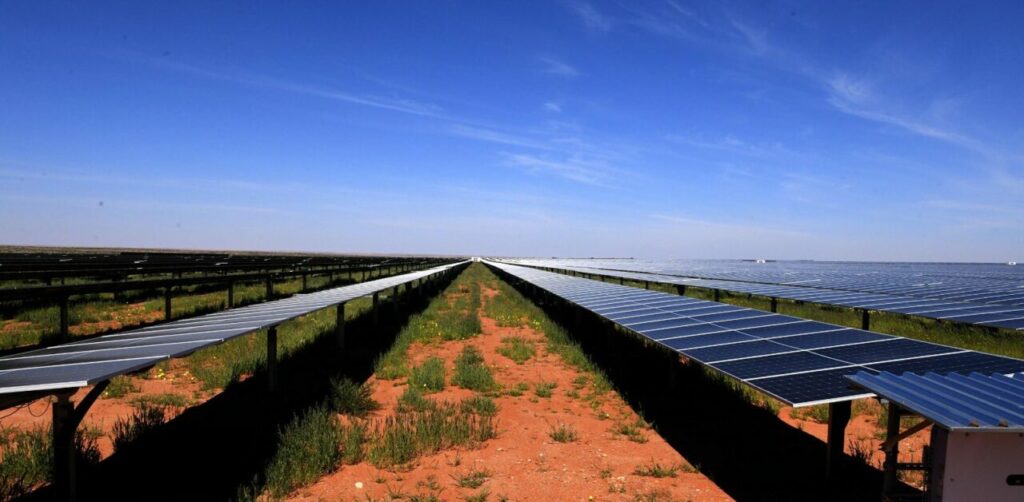“It’s significant. It’s significant that we’re hosting the largest project combination of renewable PV and also battery storage. [It] simply means South Africa is a trailblazer, and we want to retain that unassailable position, I think, as a country,” the minister told a reporter from state broadcaster SABC.
Asked what it meant for energy security, Ramokgopa said the project underlines the essential need to bring online more generation capacity to add to what is produced by state utility Eskom, to help South Africa come out of a “very, very difficult situation of load shedding”.
Ramokgopa was joined by Northern Cape provincial premier Zamani Saul and Scatec CEO Terje Pilskog on Thursday (18 April) at the site of the Kenhardt project, which features three separate solar-plus-storage systems.
With a combined solar generation capacity of 540MW, and 225MW/1,140MWh of battery energy storage system (BESS) technology, the project is providing electricity to state utility and grid operator Eskom under a long-term (20-year) power purchase agreement (PPA).
The plants began commercial operations in December before this week’s ceremonial unveiling. As part of ongoing efforts to mitigate energy supply and peak demand management issues, Scatec is contracted to supply 150MW of dispatchable electricity from the complex between the evening peak demand hours of 5:30 pm and 9:30 pm daily.
Transmission is the next problem for South Africa government to solve
South Africa’s grid is under frequent strain and Eskom is forced into frequent load shedding events along with unplanned power outages.

As a result, the government has turned to procuring energy capacity from private sector independent power producers (IPPs) and designing programmes such as the one which awarded Scatec its contract in Kenhardt to manage peak demand.
While the development of renewables is “growing exponentially,“ the government is investing in a combination of clean energy and fossil fuels to ensure there is “an energy future, ensure that there is energy sovereignty and security in the country,” minister Dr Kgosientsho Ramokgopa said.
For example, while the government has held seven bid windows for its Renewable Energy Independent Power Producer Procurement Programme (REIPPPP), and recently opened a third bid window for a battery storage equivalent, its Risk Mitigation IPP Procurement Programme has awarded contracts to natural gas power plant operators, as well as to developers of solar-plus-storage projects.
SABC reporter Ulrich Hendricks also asked the minister what is being done to fix the South African grid, noting that it remains the biggest challenge for the development of new capacity resources.
“You’re absolutely correct,” Ramokgopa said.
“If you take this, the project [at Kenhardt] is ‘overdesigned’. By that, I mean, at any given time, especially now [in the middle of the day], it’s producing more than what it’s dispatching, what it’s making available to the grid, and part of the limitation is the issues with transmission.”
The government, Eskom and the National Transmission Company of South Africa are working together to create a model to accelerate transmission buildout so that the country can take advantage of its rich renewable energy potential, including some of the highest irradiation levels in the world.
The minister told Hendricks that the limiting factor is the grid although land is available. Locating load as close as possible to demand is the best way to take advantage of that potential, and an announcement will be made soon on “how we’re not going to deal with transmission,” he said.
This will involve identifying transmission corridors that are initial “low-hanging fruit,” making development easier, while state utility Eskom’s thermal power plant fleet could provide suitable brownfield sites for siting new assets that offer built-in, existing grid access.
The minister did say in a post on Wednesday (17 April) to social media site X (formerly Twitter) that due to sustained generation capacity, there have been no load shedding events for 21 consecutive days, and that load shedding “will continue to be suspended until further notice.”


